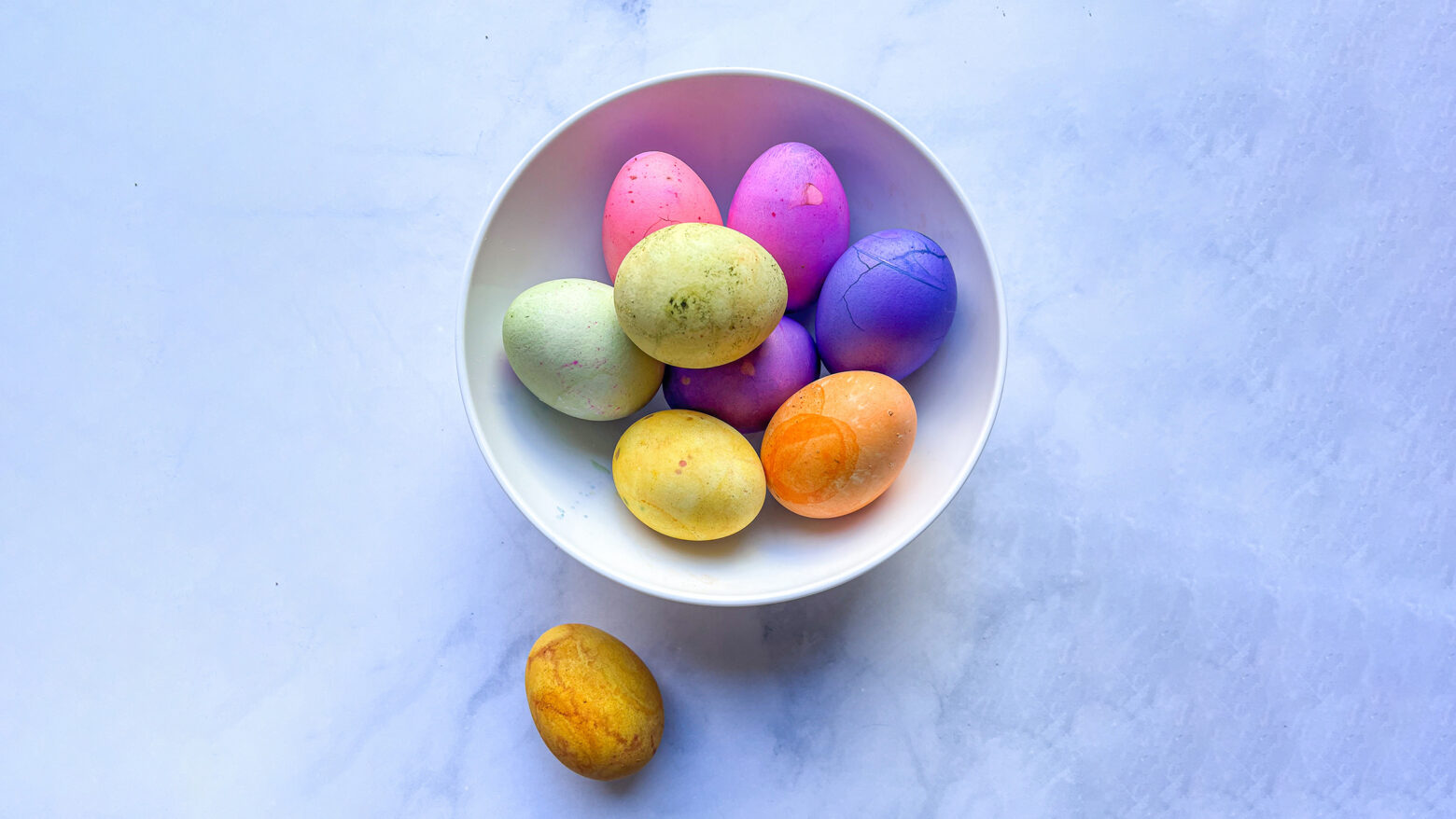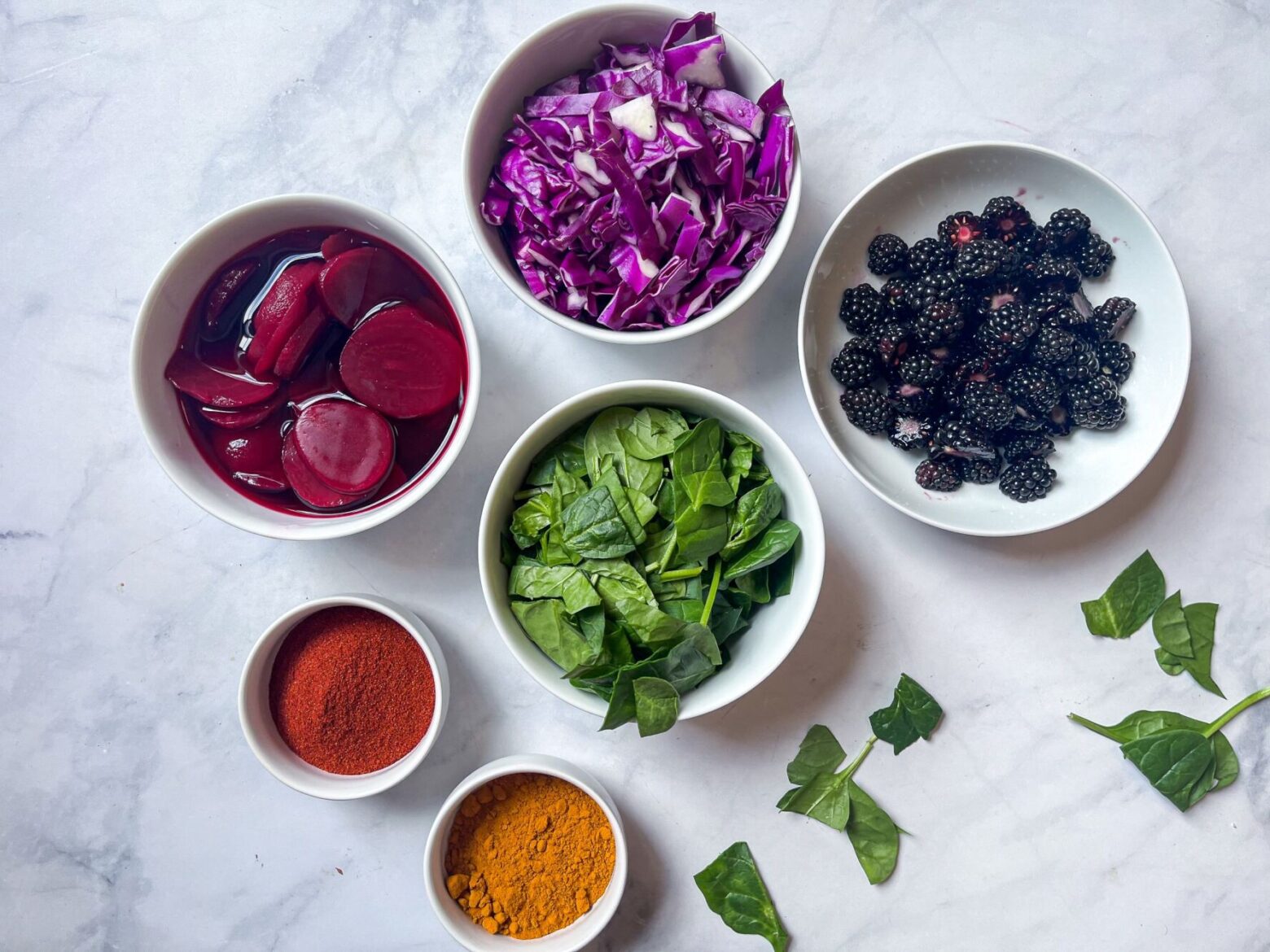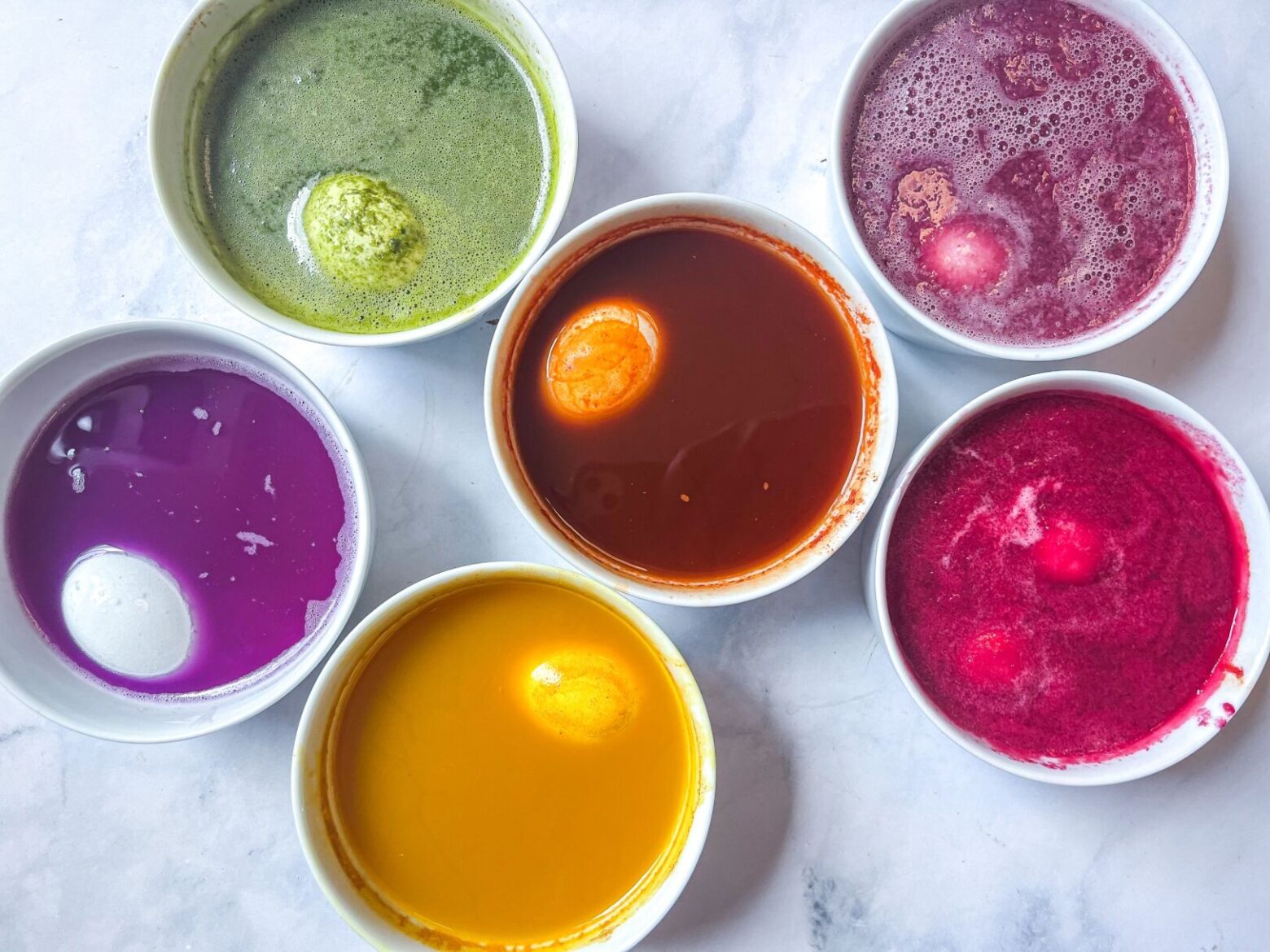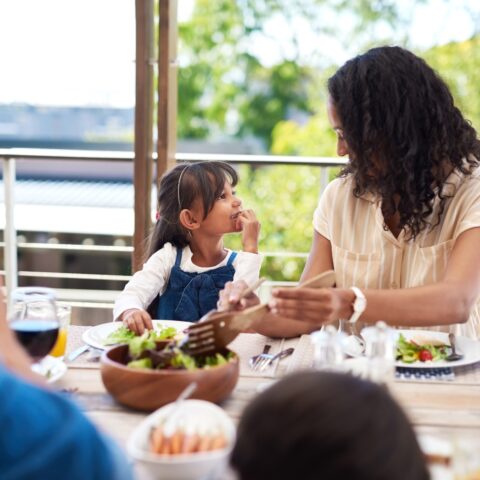Natural Dye for Easter Eggs

For an easy Easter craft, look no further than your fridge and spice cabinet. The following ingredients can be used to make simple, natural dyes for festive decorations—and there’s a few ways you can use them to color your eggs. To get started, grab a pot, water, eggs, and as many natural coloring agents as you’d like. Then choose the best method for you below.
Natural Dye Methods
- For more vibrant colors, boil each ingredient with as many eggs as you want in a medium pot with water for about 30 minutes.
- For softer colors, boil the ingredients in water, then strain out the solids and allow to cool before soaking the eggs for 30 minutes. You can used hard-boiled eggs for this room-temperature method or raw eggs if you plan to hollow them out later—plus this method is safer for kids to participate in.
- For festive deviled eggs, peel and halve a hard-boiled egg before soaking 10 minutes in a bowl of room-temperature natural dye.
Tip: Boiled a batch of eggs ahead of time and forgot which ones were which? Just give it a spin. If the egg spins easily, it’s hardboiled. If it struggles to gain momentum, it’s raw.

How to Create Natural Dyes for Easter Eggs or Other Festive Crafts
Red/Pink: Beets are vibrant vegetables that will give you beautiful pinkish-red eggs. Boil beets with water to extract their color or soak the egg in room-temperature beet juice.
Orange: Paprika isn’t just great for the final touch on your deviled eggs. When mixed in water, it will give you a bright orange dye.
Yellow/Gold: Anyone who has cooked with turmeric knows this spice has a tendency to saturate everything it touches with yellow. Play around with the concentration of turmeric in water—less turmeric will give you a lighter yellow, while more will learn toward an orange hue.
Green: Boiled spinach can yield a green color for your eggs if using older leaves, otherwise it may turn out yellow-green. If the color is still not as green as what you’re hoping for, try adding a splash of natural blue dye to even out the hue.
Blue: Red cabbage is a funny vegetable. Its color is purple, and when boiled in water it creates a blue tone. As blue can be hard to replicate naturally in recipes, this is a go-to natural dye when you need to bring out the color in certain dishes, like the blue layer in these Rainbow Popsicles.
Purple: Ripe blackberries will yield a darker juice to use as a purple dye compared to unripe berries. Choose ones that are dark, plump, and give slightly to the touch. Slice the berries before adding them to the pot to boil.

Andrea Dehnke
Andrea is the Content Manager at The Paleo Diet and has experience working with several health and nutrition publications.
More About The Author




